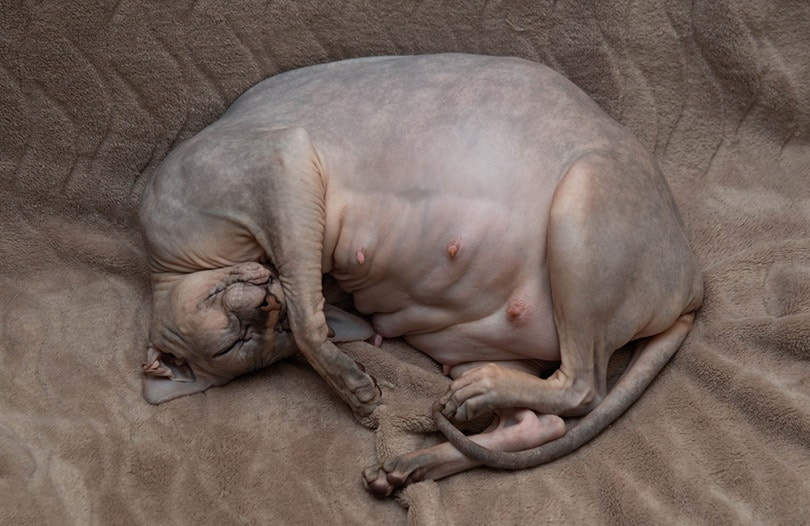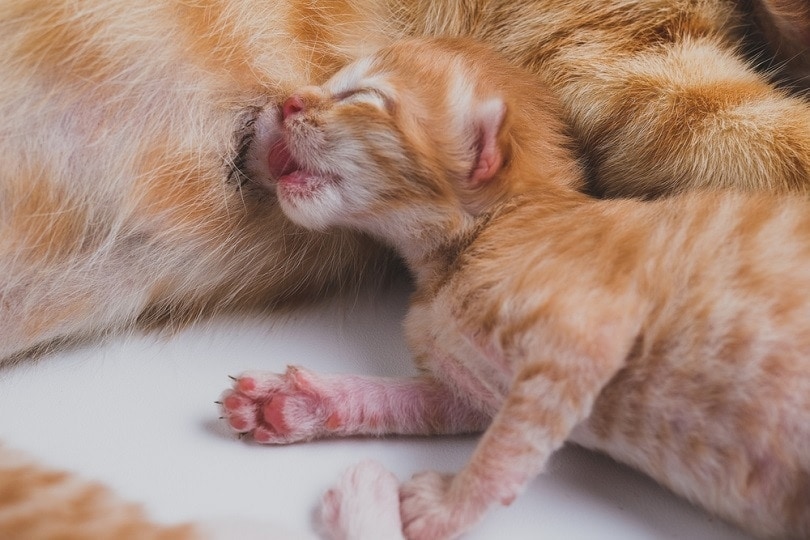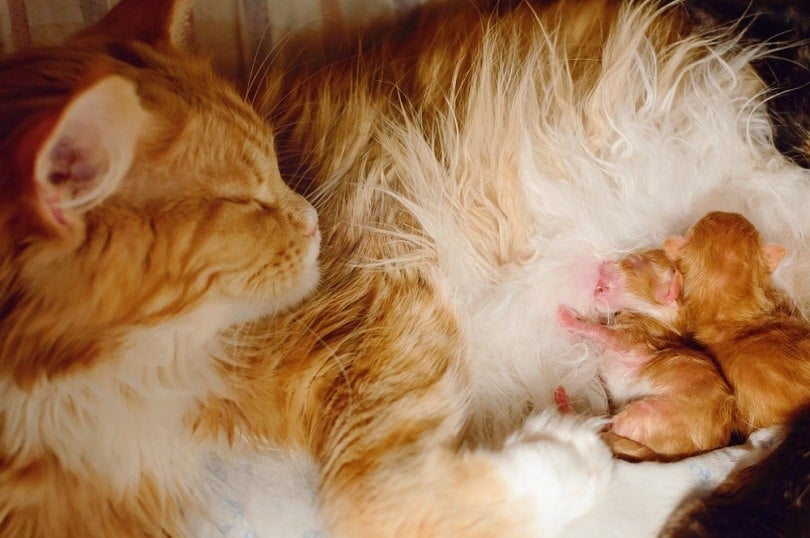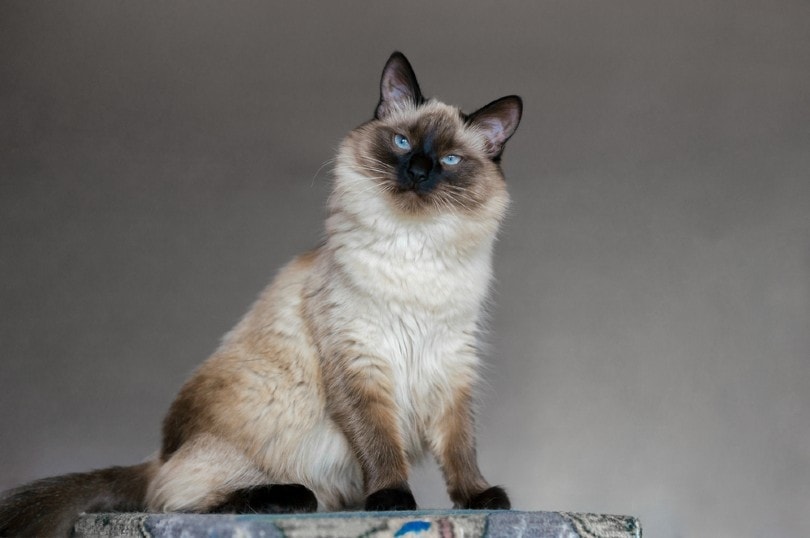How Many Nipples Do Cats Have? Feline Anatomy Facts (Vet Verified)
By Ashley Bates
Updated on

Have you ever wondered why some mammals have so many nipples when humans seem to get by with just two? You’ve probably landed here because you’ve got a cat at home and want to know how many nipples a cat has, so let us enlighten you on the subject. Cats generally have eight nipples—but not always. Even male cats have nipples, so it isn’t sex-specific.
Even though all cats have nipples, mother cats are the only ones who really need them. So, how do they work and what are they for? Let’s learn all you can about nipples on a cat.
What Are Cat Nipples?
Nipples, or teats, are protrusions on the belly connected to mammary glands. When a cat is pregnant or lactating, these glands produce and fill with milk. Nipples are the channels through which this nutritious substance is available to the kittens once they are born.
The kitten’s suckling stimulates milk release at the teat. So, unless the cat is pregnant or nursing, your cat should not produce any milk. However, hormonal imbalances and false pregnancies might result in milk production.

How Many Nipples Do Cats Have?
Generally speaking, cats have roughly six to eight nipples. The number of nipples can vary depending on the cat. By inspecting the belly, you also notice that the nipples might not be entirely evenly placed or in perfect lines.
Some of them might appear scattered and be even or odd numbered. However, eight is the average and most common.
Do Males Have Nipples?
Just like humans, male cats also have nipples. Their nipples can vary in number just like females’, only they’ll be less prominent. That means even in shorthaired cats, you might have to dig through their fur even to find one in the first place.
They don’t serve any purpose, as they don’t produce milk. However, the bumps exist nonetheless.
How Do Nipples Change Over Time?
Some cats’ nipples are noticeable and stick out, while others are flush to the skin. They can also change over time. During pregnancy, they become larger, protrude more, and change color. The fur around the nipples also falls off, making them even more noticeable.
Once the kittens have been born and need to be nursed, the nipples tend to protrude out farther than initially.
Nipple-to-Kitten Ratio
Ideally, cats will have as many nipples as they have kittens. But in some cases, with very large litters, the kittens might outnumber the nipples. In this case, it is very common to have a runt that might not get as much nutrition.
If that is the case, you might have to bottle feed and wean the kitten by hand. However, mothers are very resilient and resourceful. So, they always do their best to make sure each kitten is well fed.

Pregnancy and Lactation
Female cats can only lactate after pregnancy is complete. Cats become sexually mature after roughly 6 months and reproduce between one and nine babies, but the average is four to six.
Kittens nurse exclusively for the first 5–6 weeks of life. After that, they start slowly eating solids. Once they are 8 weeks old, they should be able to eat kitten chow without needing their mother’s milk.
Conclusion
So, now you know how many nipples a cat has—roughly. If you care to take a count and want to risk touching the belly, maybe your cat will let you feel around. If you have a male cat and got a little scared about the tummy bumps, no worries. They have them too.
If your cat is having trouble nursing a large litter of kittens, reach out to a professional for guidance. Your vet can recommend ways to assist the mother and teach you how to hand feed, if necessary.
Related reads:
Featured Image Credit: Azovsky, Shutterstock












